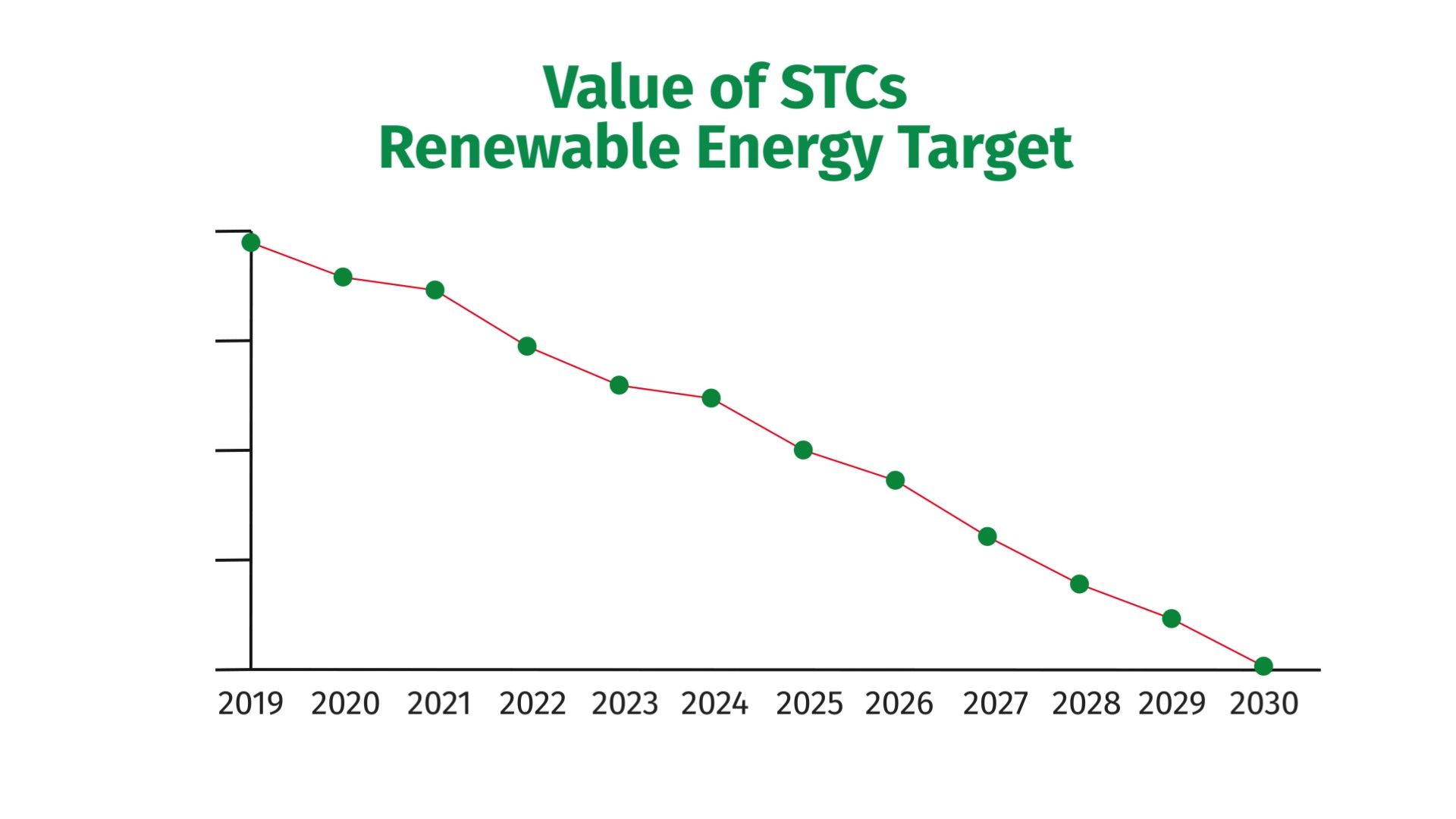Read on to discover what STCs are, what their value is, and what STCs mean for new solar system owners.
What Are STCs?
To understand STCs, we first need to take a look at the Australian Federal Government’s Renewable Energy Target as it directly interacts with and impacts STCs. Two decades ago, a nationwide scheme called the Renewable Energy Target was introduced and aimed to incentivise small-scale renewable energy system installations, including solar panel systems.
The scheme achieves this by creating Small-scale Technology Certificates (STCs), bought by Renewable Energy Target liable entities and surrendered to the Clean Energy Regulator. In short, the trading in of these certificates is what results in homeowners or small businesses receiving a discount, or “rebate”, on their solar system installation. The rebate offsets the total cost of the installation, saving on the up-front purchase price.
STCs can be obtained by households and businesses with solar PV systems up to 100kW in size, where for every megawatt-hour of solar power that is generated, one STC is created. The larger your residential or commercial solar system is (up to 100kW), the more STCs a home or business owner can attain. Therefore, the STCs generated from your solar system are based on your total system size.
In summary, an STC is a tradeable commodity that liable entities sell on behalf of solar system owners, based on the system’s production and output. In return, solar system owners receive a reduction (“rebate”) in their upfront installation costs.

What is the value of an STC?
As STCs affect the upfront purchase price of a solar system installation, individuals lock in the value of their STC upon installation. The Renewable Energy Target Scheme is due to expire (in its current form) in 2030, and as the Scheme directly interacts with STCs, the value of STCs diminishes as this expiry date draws closer.
Inevitably, this means that solar systems will become more costly upfront as we near 2030.

What does this mean for home and business owners looking to install solar?
For those looking to install a residential or commercial solar system, we highly recommend acting sooner rather than later. With the 2030 deadline being kept in mind, solar is more financially viable the sooner you purchase, as STC values will decline with every year.
It is also important to consider the quality of the solar system you are purchasing - a high-quality system will ensure you won’t need to replace it in 3-5 years time when the STC market is devalued.
Purchasing a larger solar system than you currently need is another factor to consider, as not only are you generating more STCs from the larger system, but you are also accounting and preparing for potential additions to your property in future, such as electric vehicles, chargers, and battery storage. Preparing for those additions now ensures you are capturing the STC value while it is at its highest, saving you money now and also down the track.
Wrapping up
Australians can take advantage of the STC market now and install a new solar system on their residential or commercial property to lock in a high-value STC rebate. With this Scheme set to expire in its current form in 2030, it is important to invest in a solar system as soon as possible as the STC value will continue to decrease every year up until 2030. Invest in a high-quality system that won’t need to be replaced, and also consider investing in a larger system to accommodate for increased energy needs in years to come.
Who are we?
At Springers Solar we only recommend and install quality components that have been expertly selected by our team of in-house engineers, solar experts, and project managers. We design our systems to fit the unique requirements of your home or business and only select the components that will perform under those conditions. We are trusted by some of the largest inverter manufacturers in the world and are recognised as preferred/recommended installers for a large portion of them. Choosing solar is an investment so taking the time to research and choose components that will work for your project is important to us.
Contact us about anything related to our services using the form below.
We'll get back to you as soon as possible.
What are STCs?